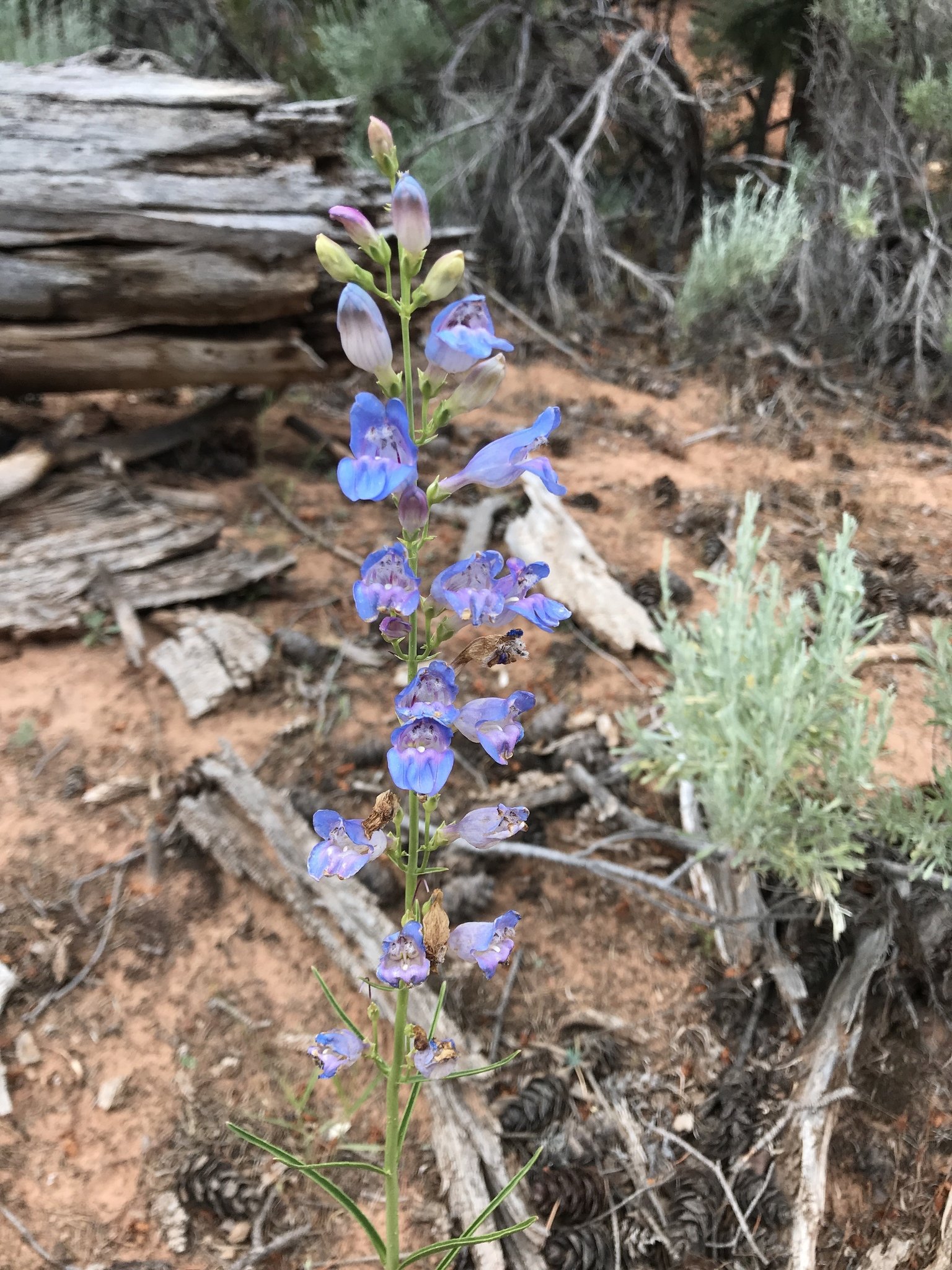Penstemon comarrhenus
Dusty Penstemon
Family: Plantaginaceae
Small perennial with dusty blue foliage (at first). Flowers rise up far above the plant with pink to blueish purple flowers in summer—these plants can reach up to 3’, though in the low desert 1-2’ is more common. Flower tubes of of this species are very narrow and broaden quickly to a wide, almost spherical, throat. Both the tube and throat are very pale lavender pink but the upper and lower lips have stronger tinges of blue with strong red violet lines. The anthers are covered with kinky white hairs.
Plant in full to part sun, perhaps avoid reflective heat in the low desert. Moderate to low water when established. Provide good drainage. Very cold hardy, to well below 0°F.
Attracts hummingbirds and other pollinators. This species is likely most effectively pollinated by native bees.
Many sources mistakenly translate the Latin name Penstemon as meaning “five stamens”, but this is incorrect. The “pen” in Penstemon doesn’t come from penta (five) but from the Latin paene meaning “nearly” or “almost”, while stemon is derived from Greek for “thread”. “Nearly a thread” is a reference to the staminode, which is almost a functional stamen. "Comarrhenus" is from the Greek "kome", meaning "hairy" probably referring to the anthers of the flowers.
Photo by lizards_13 on iNaturalist
Penstemon comarrhenus on SEINET
Larval hosts for many moths and butterflies including the following:
Common Buckeye (Junonia coenia)
Dark Buckeye (Junonia nigrosuffusa)
Anicia checkerspot (Euphydryas anicia ssp. hermosa)
Arachne Checkerspot (Poladryas arachne)
Variable Checkerspot (Euphydryas chalcedona)
owlet moths (family Noctuidae)
geometrid moths (family Geometridae)
hummingbird clearwing moth (Hemaris thysbe)
The Dusty Penstemon is found in the Four Corners area of New Mexico, Colorado, Arizona and Utah and in Nevada. Known habitats are pinyon juniper woodlands, mountain brush, ponderosa pine forests, Douglas fir and aspen forest communities.

